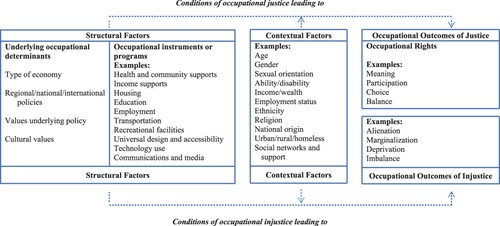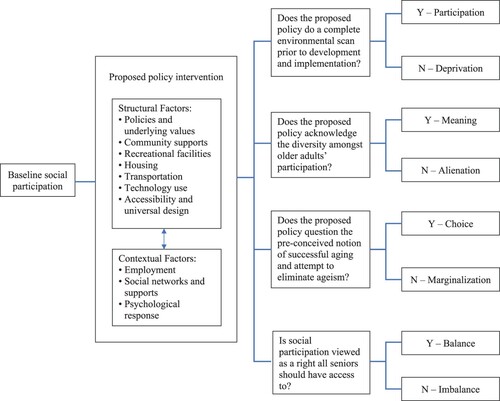Figures & data
Figure 1. A Framework of Occupational Justice. Adapted from Stadnyk, R. L. (2007). A framework of occupational justice: Occupational determinants, instruments, contexts, and outcomes. In E. A. Townsend and H. J. Polatajko. (2013), Enabling occupation II: Advancing an occupational therapy vision for health, well-being, and justice through occupation (p. 81). CAOT Publications ACE. Adapted from Townsend, E. A. & Wilcock A. A. (2004). In C. H. Christiansen & E. A. Townsend. Introduction to occupation: The art and science of living (p. 251). Prentice Hall. Adapted with permission from the CAOT Publications ACE.

Table 1. Group Characteristics.
Table 2. Thematic Content Analysis in Accordance with the Four Definitions of Occupational Rights and Injustices.
Data Availability Statement
The data that support the findings of this study are available from the second author, upon reasonable request.
Acknowledgements
We honour and thank the Kanien’kehà:ka (Mohawk) and the Anishinabeg (Algonquin) peoples as the traditional inhabitants of the lands of Tiohtiá:ke, Montreal, where this research was conducted.
The authors thank the participants for their time and insights provided on their experiences with social participation. The principal author expresses her sincere gratitude to Dr. Nigel Livingston and Dr. Nathan Lachowsky in the School of Public Health and Social Policy of the University of Victoria, and Dr. Marika Demers in the Department of Occupational Therapy at McGill University for providing valuable input with the writing of this manuscript.


